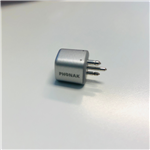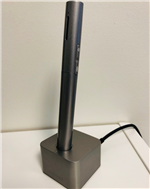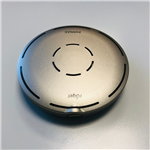-
About Hearing Technology
Our Echo Center students are deaf or hard of hearing (DHH), and they use listening and spoken language skills to communicate and learn at school. Personal hearing technology and classroom hearing technology are essential to the development of age-appropriate listening and spoken language skills and they also ensure that our students can hear in all school spaces.
We seamlessly integrate this technology into the fabric of our school culture. From an early age, all of our Echo Horizon students—both hearing and DHH—learn the importance of appropriate and consistent use of hearing technology for communication and learning.
-
Personal Hearing Technology used by Echo Center students
-

Behind the Ear (BTE) hearing aid
This little device amplifies sounds. It sits over the ear and has a tube that connects to a customized earmold, thus feeding sound into the ear canal. This technology is used for all levels of hearing loss.
-

Bone Anchored hearing aid (BAHA)
A bone anchored hearing aid is a type of hearing aid that vibrates the skull so that the person can hear through the bones in their head. It is usually used for conductive or single-sided hearing loss. For younger students, this implantable hearing aid is typically worn on a headband.
-

Cochlear Implant (CI)
The CI has two components, an internal electrode that is surgically implanted into the cochlea (the small snail-like organ of hearing) and an external speech processor. The external speech processor hooks over the ear and has a cable that connects to a small, round headpiece. This headpiece had a magnet that connects to the internal electrode’s magnet that sits under the skin. The speech processor transmits sound to the brain by way of the internal electrode.
-
Classroom Hearing Technology used in All School Spaces
At Echo Horizon School we use cutting edge technology: the Roger digitally modulated (DM) system by Phonak in our school spaces. Classrooms are noisy and this system is essential to making sure that our Echo Center students have clear access to sound. It helps offset the negative impact of background noise and distance from the primary sound source. Below are the individual components of the Roger DM system:
-

Receiver
This small device connects to personal hearing technology in order to sync it with the Roger DM system. The specific receivers may vary depending on the type of personal hearing technology. Many of our students use a Roger X.
-

Tower
A tall speaker that transmits the voice of the speaker (who is using either the touchscreen or pass-around microphone) to the entire classroom. There is research that demonstrates the positive effects of a speaker system for all students, DHH and hearing, and teachers.
-
We have several types of wireless microphones that can be used with this system.
-

Touch screen microphone
The primary speaker, usually the teacher, wears this microphone, which transmits the speaker’s voice to the students’ personal hearing technology. DHH students are still able to hear other speakers.
-

Pass-around microphone
This looks very similar to any other handheld microphone. The pass-around mic syncs with the touchscreen microphones and tower. Students pass it to one another as they speak during large- and small-group class discussions. It’s important for our DHH students to be able to hear their peers as well as their teachers!
-

Roger Pen
This small device looks like a thick pen and can be worn around the neck or held in a hand. It does not sync with a touchscreen mic or tower, but is still useful in many situations, such as small-group learning opportunities.
-

Roger Select
By setting this small, round disc with multi-directional microphones in the middle of a small group, teachers can ensure that a DHH student has optimal access to a discussion. It does not connect with other microphones.
- Echo Horizon School
- Hearing Technology

